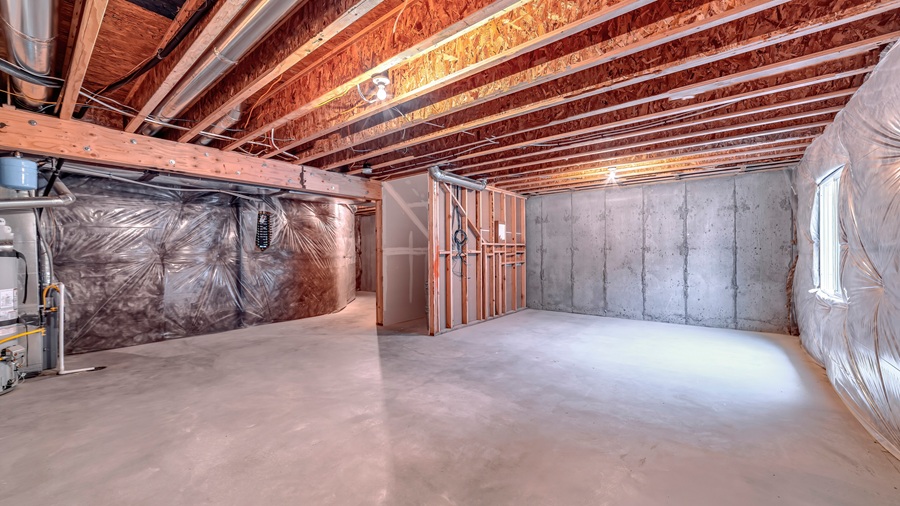The ultimate guide to planning a successful basement renovation
By approaching a basement renovation strategically, you can turn your lower level into one of the most enjoyable and practical parts of your home
RENOVATING YOUR BASEMENT is one of the most effective ways to add functional space and increase your home’s value. But turning a cold, underused lower level into a warm, welcoming environment takes more than just a few coats of paint and some new flooring. A successful basement renovation begins long before construction starts—with vision, planning, and careful decision-making.
Whether you’re planning a home theater, a rental suite, or a multifunctional family hub, this guide walks you through every critical step to help ensure your renovation is smooth, efficient, and worth every dollar.
Step 1: Define the Purpose of Your Renovation
Before picking up a hammer—or even hiring a contractor—you need clarity. What do you want your basement to become?
Here are some popular basement renovation goals:
- Extra bedrooms for guests or growing children
- A secondary suite to generate rental income
- A home office or remote learning space
- A media or game room for entertainment
- A personal gym, yoga studio, or hobby room
- A cozy living room or family den
Understanding the purpose will influence every other choice you make—from layout to materials to budget.
As Stephen Covey famously said, “Begin with the end in mind.”

Step 2: Assess the Existing Conditions
Not all basements are ready for a transformation. Before planning finishes, you’ll want to assess the structure and condition of the space. This includes:
- Moisture: Are there signs of leaks, stains, mold, or dampness?
- Foundation: Are there cracks in walls or flooring?
- Ceiling height: Will it accommodate lighting, HVAC, and insulation?
- Plumbing and electrical access: Can you easily run new lines or upgrade existing ones?
If any of these are problematic, you’ll need to address them first. Skipping this step can lead to serious headaches down the road.
Step 3: Set a Realistic Budget
Basement renovations aren’t cheap—but they don’t have to break the bank either. According to HomeGuide, the average basement remodel costs between $25,000 and $70,000, depending on size and features.
Smart budgeting tips:
- Break down costs: Separate structural, mechanical, and finish costs.
- Plan for surprises: Set aside 10–15% as a contingency fund.
- Prioritize essentials: Moisture control, electrical safety, and insulation come before cosmetic details.
- Get multiple estimates: Pricing can vary widely depending on the contractor and materials.
- Think long-term: Spending more upfront for quality materials often reduces maintenance later.
Step 4: Understand Permit and Code Requirements
Basement renovations that include bedrooms, kitchens, or bathrooms typically require permits. In most cities, building codes specify things like:
- Minimum ceiling heights
- Egress window requirements for bedrooms
- Fire separation for rental suites
- Electrical and plumbing safety standards
- Ventilation and HVAC specifications
Skipping permits might save time initially, but it can backfire—making resale difficult and causing legal problems if violations are discovered.
If you’re unsure what your municipality requires, contact your local building department or read more from experts in the field who follow regional guidelines precisely.

Step 5: Plan the Layout Around Function
A beautiful basement is great—but if it doesn’t work well, it won’t be enjoyable. Use the purpose you defined earlier to shape your floor plan.
Functional layout ideas:
- Keep noisy areas (like media rooms or gyms) away from bedrooms.
- Group plumbing-based rooms (bathrooms, laundry, kitchenette) near existing lines.
- Include hallways or room divisions for privacy and flow.
- Use built-ins or storage walls to maximize square footage.
- Leave space for mechanical access (furnace, water heater, electrical panels).
It’s often helpful to sketch the layout or use digital tools to visualize how people will move through the space.
Step 6: Choose Smart Materials
Basements have different environmental conditions than upper floors—mainly lower temperatures and higher humidity. So your materials need to reflect that.
Top choices include:
- Luxury vinyl plank (LVP) for waterproof, kid-friendly flooring
- Moisture-resistant drywall for walls and ceilings
- LED lighting to minimize heat output and energy usage
- Spray foam insulation for comfort and efficiency
- Quartz or sealed wood countertops in kitchens or bars
Stick to finishes that are both durable and attractive, especially if the space will be used daily.
Step 7: Don’t Neglect Lighting and Ventilation
Many basements lack natural light and airflow. Poor lighting can make even a well-finished basement feel like a dungeon.
Here’s how to brighten it up:
- Install recessed ceiling lights evenly across the space
- Use dimmers for adjustable ambiance
- Add floor and table lamps in living or reading zones
- Consider mirrors and light-reflecting colors to enhance brightness
- Upgrade ventilation with fans or ducting to prevent stale air and regulate humidity
A well-lit, well-ventilated basement doesn’t just look better—it feels better.

Step 8: Add the Extras That Make Life Easier
Once the essentials are covered, it’s time to think about features that bring extra comfort and convenience to the space.
Consider adding:
- In-floor heating for year-round comfort
- A second entrance if you’re planning a rental unit
- Smart home features like automated lighting or temperature control
- Sound insulation for bedrooms or offices
- Built-in cabinetry to reduce furniture clutter
These final touches can turn a good basement into a great one.
Final Thoughts
A successful basement renovation isn’t just about aesthetics—it’s about function, safety, and long-term value. By approaching the project strategically, step by step, you can turn your underused lower level into one of the most enjoyable and practical parts of your home.
So whether you’re designing a playroom for the kids, a peaceful guest suite, or your dream home theater, let purpose lead the plan. For more guidance and real-world examples, read more about professional approaches to smart basement design read more.

